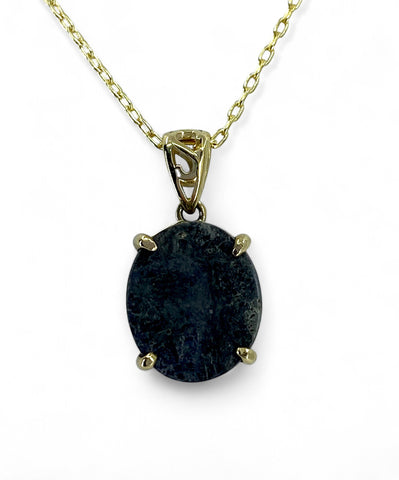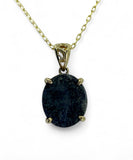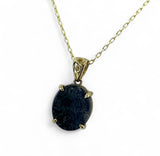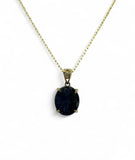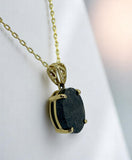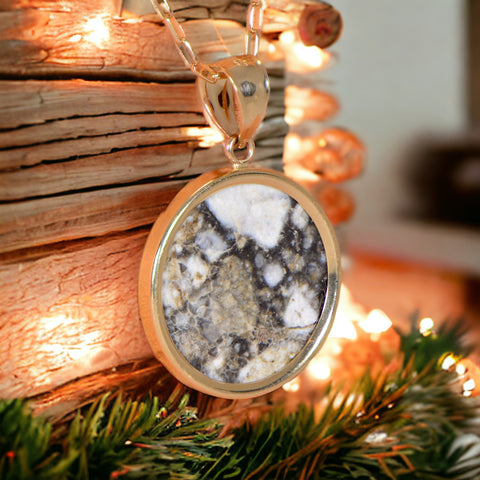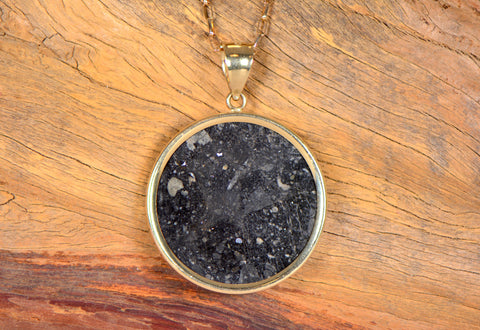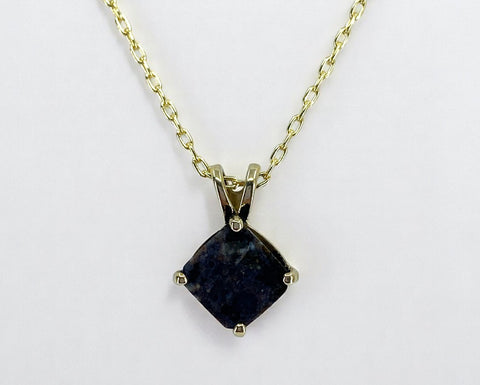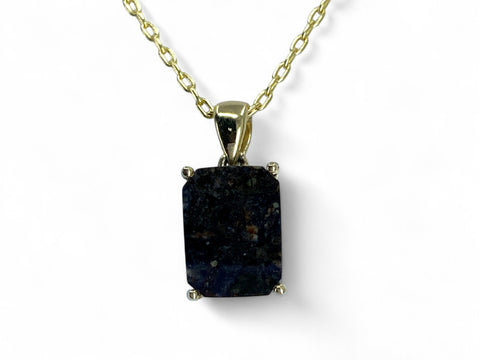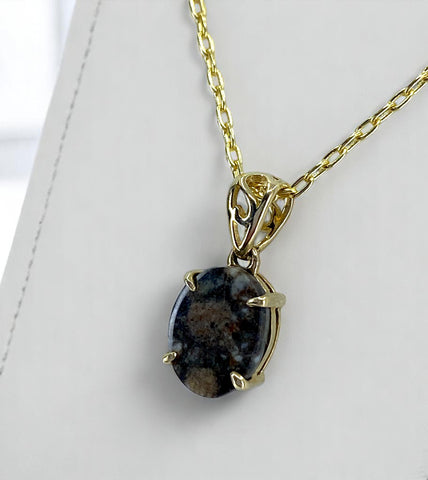Selene Moon Pendant I Genuine Lunar Meteorite Necklace - 14Kt Gold Jewelry
Selene Moon Pendant
Selene, goddess of the moon in Greek Mythology.
Selene Moon Pendant's Center Stone: Lunar Meteorite - Real Piece of the Moon. A Fragmental Lunar Breccia Meteorite named NWA 12592
Pendant Setting: 14Kt solid gold
Description: Beautiful and unique Moon Pendant with center stone fashioned from a piece of the Moon. Hand crafted from the beautiful lunar meteorite NWA 12592 and set in 14Kt Solid Gold. The 14K gold chain shown is also available for purchase.
Dimensions not including bail: Approximately 14mm x 11mm x 4mm
Dimensions including bail: Approximately 22m x 11mm x 4mm
Official name: NWA 12592
Type: Lunar Fragmental Breccia
Year Found: 2017
Country: Algeria
Parent body: The Moon - this material was ejected from our only natural satellite when the Moon was hit by another meteorite. It should be noted that we do not know exactly which crater this lunar meteorite was ejected from.
Each pendant is hand crafted and has a unique center stone and it is a completely unique part of the Moon. No two pendants are exactly alike. The center stone for this beautiful pendant has an oval shape. This center piece was ejected from the Moon and recovered in Algeria in 2017. The center stone has been free-hand shaped to find the best qualities in each area of the stone, and making every piece totally unique.
The story: Our Moon takes a lot of hits. This is evidenced by the millions of craters that cover the moon's surface. Thankfully the bombardments have slowed down considerably in the last few hundred thousand years, but they still do occur from time to time. Lunar meteorites are material ejected from our Moon's surface when it gets hit by a meteorite. If the impact has enough energy, some of the ejecta gets thrown so far it escapes the Moon's gravity becoming meteoroids hurtling through space. Some of those lunar meteoroids have the potential to eventually fall into Earth's gravity well and go screaming through the atmosphere to hit the surface. Once they hit the Earth's surface, they earn the designation of being a meteorite. Much later, perhaps thousands of years later, an even smaller fraction of the meteorites that didn't fall into the oceans or onto unrecoverable terrain, are recovered by nomads and others who happen to find them. Nothing short of miraculous odds. To describe them as rare, is perhaps an understatement.
We Also Recommend

